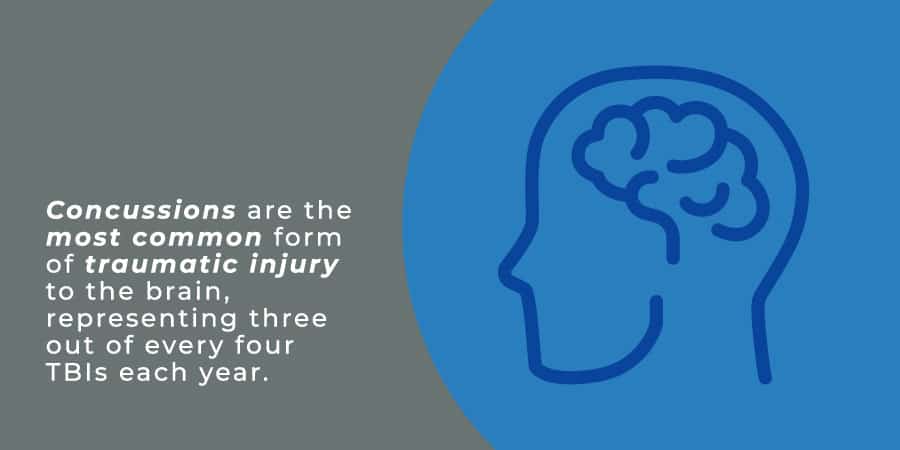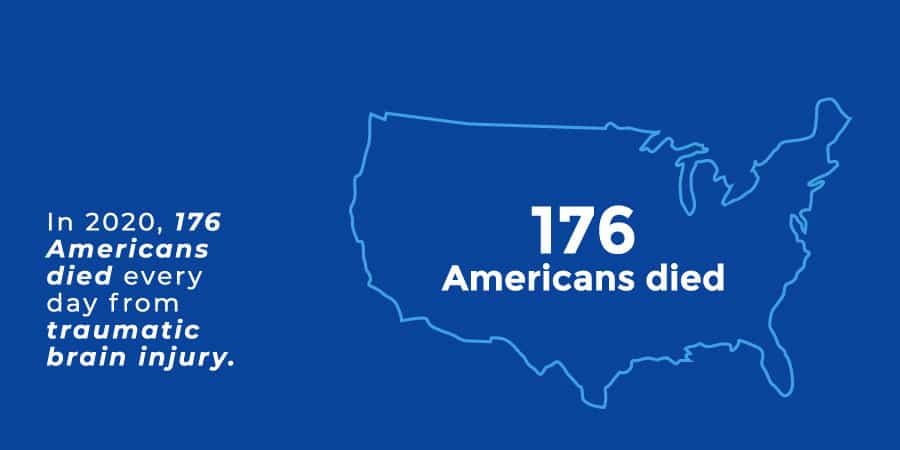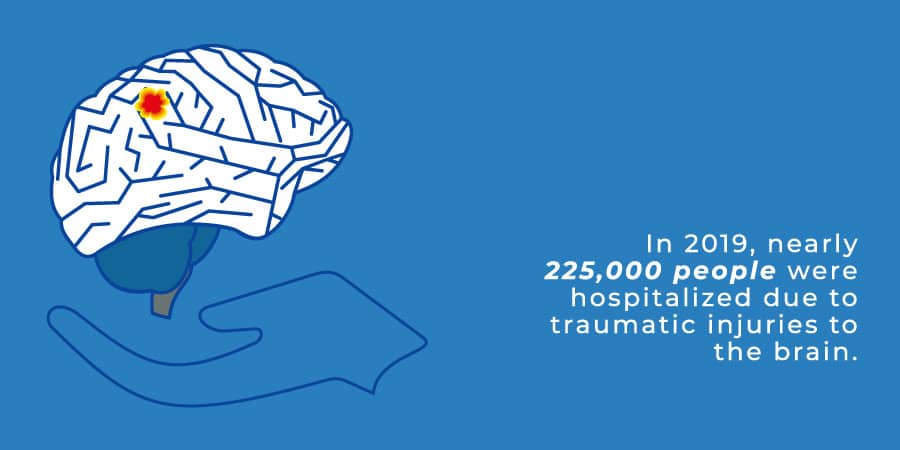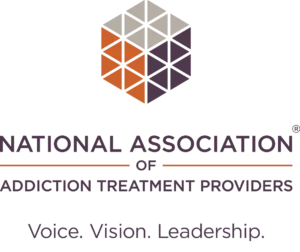
Traumatic Brain Injury
Traumatic brain injuries can occur due to physical trauma. Read on to learn more about signs, symptoms, and treatment options.
Table of Contents
Understanding Physical Trauma
Physical trauma is any type of serious injury to the body. There are two main types of physical trauma: blunt force trauma and penetrating trauma. Blunt force trauma occurs when a force or object strikes the body leading to cuts, broken bones, or concussions. Penetrating trauma occurs when an object passes through or pierces the skin or body, which usually creates an open wound.
A traumatic brain injury, or TBI, is a specific type of injury that affects how your brain works. TBI is far more common in the United States than many may realize. Almost anyone can experience physical trauma that causes a traumatic brain injury.
Common Types of Traumatic Injuries
- Spinal cord injuries
- Spine fractures
- Facial trauma
- Crushing injuries
- Acoustic trauma
- Traumatic brain injuries
What Is Traumatic Brain Injury?
The term traumatic brain injury is an umbrella term used to describe the many types of injury to the brain. A traumatic brain injury occurs when a sudden trauma causes damage to the brain.1
Traumatic injury to the brain is very common and remains a leading cause of death and disability in the United States. In 2019, over two hundred thousand people were hospitalized due to traumatic injuries to the brain. In 2020, almost two hundred Americans died every day from traumatic brain injury.2
Common Types of Traumatic Brain Injury

There are several types of traumatic brain injury, and each can be classified as mild, moderate, or severe.
Closed Brain Injury
Most traumatic injuries to the brain are closed injuries. A closed injury occurs when a physical force or blow to the head damages the brain but does not penetrate the skill. Closed injuries often lead to brain swelling.
Penetrating Brain Injury
A penetrating or open TBI involves an object such as a bullet going through the skull. If the object enters the brain, it will cause damage to the brain tissue.
Mild Traumatic Brain Injury
Moderate Traumatic Brain Injury
Moderate traumatic brain injury symptoms include loss of consciousness that may last up to a few hours and states of confusion that can persist for weeks after the injury. A moderate TBI can produce lasting complications, which may resolve in a matter of months or be lifelong.
Severe Traumatic Brain Injury
Severe traumatic brain injury results from a crushing blow to or penetrating injuries to the skull or brain. A severe TBI is a dangerous, life-threatening condition that often leads to long-term challenges or disability. Severe traumatic brain injuries could be classified as either open or closed.
TBI: Contusions Overview
Causes and Risk Factors of Traumatic Brain Injury
Traumatic injuries to the brain result from physical trauma to the head. When you suffer a violent or hard hit to your skull, it can change how your brain uses chemicals and energy to compensate for the damage it sustained. Often, these functional changes cause side effects including headaches, sensitivity to light and sound, and confusion.
Mild traumatic brain injury changes are generally short-term and do not lead to permanent brain damage. However, with moderate and severe traumatic injury, the chemical changes within your brain can last much longer and result in permanent damage to the cells in your brain.
What Causes Traumatic Brain Injury?
Falls are perhaps the most common traumatic brain injury causes. Some statistics suggest up to 50% of emergency department visits for TBI are the result of falls. Individuals older than sixty-five and younger than seventeen statistically experience the greatest number of fall-related traumatic brain injuries.
In addition to falls, other common causes of traumatic injury to the brain include physical trauma that occurs due to:
- Child abuse
- Violence (including domestic violence, assault, and shaken baby syndrome)
- Gunshot wounds (explosive blast injuries)
- Motorized vehicle accidents (including cars, ATVs, motorcycles, and snowmobiles)
- Sports, recreational, or work injuries
- Military injuries
Traumatic Brain Injury Risk Factors
- Men, regardless of age
- Children, especially from birth to age four
- Young adults, especially between ages fifteen and twenty-four
- Adults over the age of sixty
Signs and Symptoms of Traumatic Brain Injury
Traumatic brain injury symptoms vary widely based on the severity of the injury. A key indicator of potential physical trauma to the brain is loss of consciousness immediately after a blow to the head. Some signs and symptoms of a TBI may occur immediately following the injury, while others may take days or weeks to appear.
Traumatic Brain Injury Symptoms Overview
Mild Traumatic Brain Injury Symptoms
The signs and symptoms of a mild TBI may include physical symptoms like nausea, vomiting, problems speaking, headache, fatigue, dizziness, and loss of balance. Psychological and behavioral symptoms of a mild traumatic injury to the brain may include depression, anxiety, sleeping problems, brief loss of consciousness, confusion, disorientation, mood changes, and difficulties concentrating.
Sensory symptoms may also occur regardless of the traumatic brain injury type. Examples of sensory symptoms that may accompany mild physical trauma to the brain are sensitivity to light and sound, blurred vision, changes in the ability to smell, and ringing in the ears.
Moderate to Severe Traumatic Brain Injury Symptoms
Moderate to severe traumatic injuries to the brain can include the same signs and symptoms as a mild injury. Also, these symptoms may take hours to days to appear. The physical symptoms you may notice in someone with a moderate to severe TBI include repeated vomiting, loss of coordination, loss of consciousness (several minutes to several hours), persistent headaches, seizures, pupil dilation, and clear fluid draining from the ears or nose.
Also similar to a mild brain injury, moderate to severe injuries are accompanied by behavioral and cognitive symptoms. For example, a moderate to severe brain injury may cause slurred speech, agitation, overwhelming confusion, and coma.
Signs of TBI in Children
Unlike adults, infants and young children may not be able to communicate certain symptoms. In a child who has suffered physical trauma to the brain, you may notice:
- Persistent crying and inability to be consoled
- Seizures
- Changes in sleeping patterns
- Easy or unusual irritability
- Changes in eating or nursing patterns
- Lack of focus
- Depressed mood
- Loss of interest in favorite activities or toys
- Extreme drowsiness
TBI In Children Overview
Traumatic Brain Injury Effects and Complications
Short-Term Effects
The short-term effects of a TBI, such as a concussion, often include temporary problems with balance, vision changes, concentration, migraines, and fatigue. Typically, someone with a mild TBI will notice their symptoms resolve independently within one to three months. Most people recover from a concussion within two weeks.
Other potential short-term effects of mild brain injury include sensitivity to light and sound, vertigo, mental fatigue, confusion, balance problems, and headaches.
Long-Term Effects
The long-term effects of a traumatic brain injury depend on which part of the brain experienced physical trauma.
- Frontal Lobe Injuries: The frontal lobe is the part of your brain responsible for problem-solving, judgment, impulse control, reasoning, and planning. Damage to the frontal lobe can lead to risky or inappropriate behaviors.
- Left-Sided Injuries: Damage to the left side of the brain causes problems with speech and logic and trouble with understanding others or talking.
- Right-Sided Injuries: Damage to the right side of the brain can cause problems processing visual information and performing regular day-to-day tasks, such as washing your hands or combing your hair.
Other Effects:
Other effects of a severe TBI may include:
- Headaches
- Dizziness and balance problems
- Mood swings
- Fatigue
- Seizures
- Memory loss
- Visual changes
- Paralysis
- Reduced language skills
- Chronic traumatic encephalopathy (CTE). This is a disease that occurs when someone experiences several blows to the head over an extended period. This condition is not well understood, and currently, the only way to diagnose CTE is through examination of the brain tissue after death.
Regardless of severity, someone who experiences a TBI is at an increased risk of anxiety, depression, and post-traumatic stress disorder symptoms. TBI also increases your risk of developing a brain bleed and chronic seizure disorders.
Traumatic Brain Injury Diagnosis and Prevention

Traumatic brain injury diagnosis requires a careful, comprehensive evaluation. A medical provider will conduct a complete medical assessment beginning with a series of questions about your symptoms and what type of physical trauma caused your injury.
Depending on the type of symptoms and their severity, medical providers may conduct several tests, such as:
- Neurological Evaluation: A series of tests designed to check your thinking motor function, memory, and sensory functions.
- Imaging Tests: Tests such as a CT scan or MRI check for bleeding and swelling in the brain.
- Blood Tests: A test called the Banyan Brain Trauma Indicator or BTI checks for protein in the blood that indicates the presence of a concussion or mild TBI.
How to Prevent Traumatic Brain Injury
Unfortunately, many traumatic brain injuries are not preventable. More often than not, they occur without warning. There are some steps you can take to protect yourself from certain incidents that frequently cause physical injury to the brain.
These include safety precautions such as:
- Wearing a helmet when playing sports, riding an ATV or motorcycle, or riding a bike
- Being a safe driver
- Protecting your vision
- Knowing your medications. Ask your doctor about the side effects of prescription or over-the-counter medications so you know which ones might make you dizzy or drowsy.
- Removing fall risks, like throwing rugs and other tripping hazards, from your home. Also, install railings and grab bars if you need them. If you have young children, be sure to use window locks and safety gates.
- Keeping active through activities and exercises like strength training, yoga, and tai chi. These can help improve balance and increase muscle.
- Using assistive devices if needed, like a walker or a cane. They can help you remain steady on your feet, preventing possible injury from a fall.
Treatment for Physical Trauma and TBI

Stage 1
This is where there is no response. This stage is sometimes referred to as a “coma.”
Stage 2
This is where generalized responses or reactions to loud noises or painful sensations occur; however, they appear to be still asleep most of the time.
Stage 3
This is a more localized response, meaning they may respond by moving away from painful stimuli or turning towards sounds. They may react to simple instructions such as “squeeze my hand.”
Stage 4
This consists of confused or agitated behavior, which often fluctuates. The person can go from inactive to restless and back quickly. Confusion and wandering often occur. Although they are more aware of what is happening, they cannot make sense of it.
Stage 5
This stage also consists of confusion, but the person is usually calmer at this stage and can complete some simple tasks independently. They may speak more clearly but are not back to normal.
Stage 6
In this stage, although confusion still occurs, the person begins to behave more appropriately overall. They will also start to remember simple things, such as names.
Stage 7
This is when the person can complete normal activities with minimal help. Learning new things is possible, but perhaps slower and more challenging than in the past.
Stage 8
This last stage is when the person can recall information about past and recent events and may now realize what happened and become upset when thinking about their injury. They may still experience changes in thinking, memory, concentration, and social skills.
Traumatic Brain Injury Treatment Options
Medications are used in traumatic brain injury treatment to limit further damage to the brain in the minutes and hours immediately after the injury. Examples of traumatic brain injury medications include anti-seizure drugs, coma-inducing drugs, and diuretics.
Depending on the severity of the injury, emergency surgery may be necessary to minimize further damage to brain tissues. Surgical procedures help to remove clotted blood, stop brain bleeding, repair skull fractures and open a window into the skull. A window into the skull is used to relieve pressure on the brain.

Rehab Options
Rehabilitation is an essential part of traumatic brain injury recovery. Traumatic brain injury rehabilitation involves working with a team of providers to improve your ability to perform everyday tasks independently. The type and length of a TBI rehabilitation program is different for everyone, as each person has differing needs once they reach the rehabilitation stage of their recovery.
Rehabilitation usually begins in the hospital environment before transitioning to an outpatient service. Members of a TBI rehabilitation team may include occupational therapists, physical therapists, neuropsychologists, social workers, speech and language therapists, vocational counselors, and specially trained doctors and nurses.
Find Help at J. Flowers Health Institute
Some people with a traumatic brain injury may experience long-term challenges, including disabilities. A TBI can increase your risk of other medical or mental health challenges like anxiety and depression. Seeking help to address your physical and mental health concerns can dramatically improve your quality of life after a TBI. Although TBI is difficult to prevent, it is possible to treat many of the symptoms that occur after an injury.
Reach Out Today
Let us help you begin your recovery journey. Contact us today to learn more about how to find help for physical trauma at J. Flowers Health Institute.
Resources
- https://www.ninds.nih.gov/health-information/disorders/traumatic-brain-injury
- https://www.cdc.gov/traumaticbraininjury/index.html
- https://my.clevelandclinic.org/health/diseases/8874-traumatic-brain-injury
- https://www.mayoclinic.org/diseases-conditions/traumatic-brain-injury/symptoms-causes/syc-20378557
- https://healthcare.utah.edu/healthfeed/postings/2021/12/traumatic-brain-injury-effects.php
- https://www.rch.org.au/kidsinfo/fact_sheets/Brain_injury_Stages_of_recovery/






